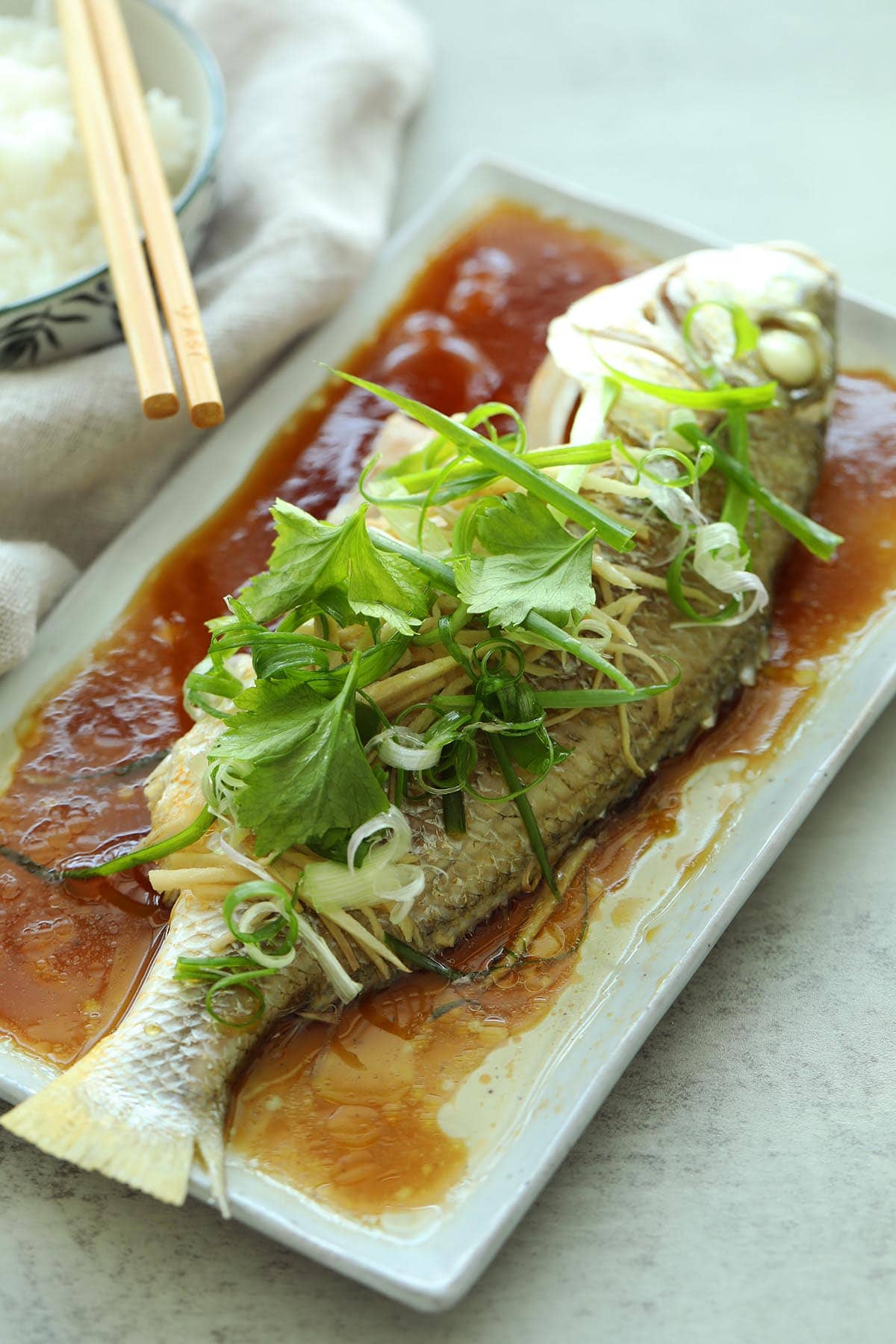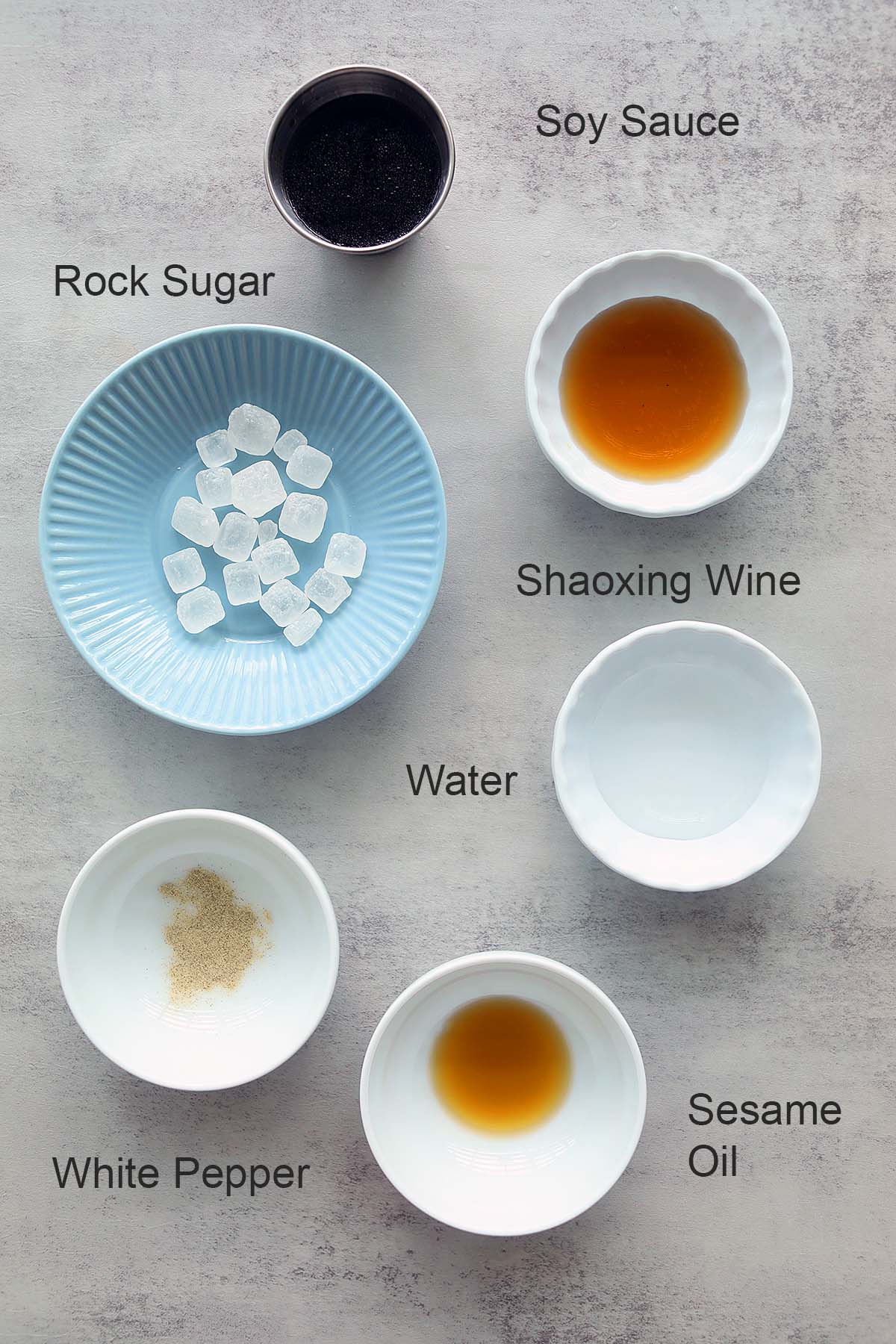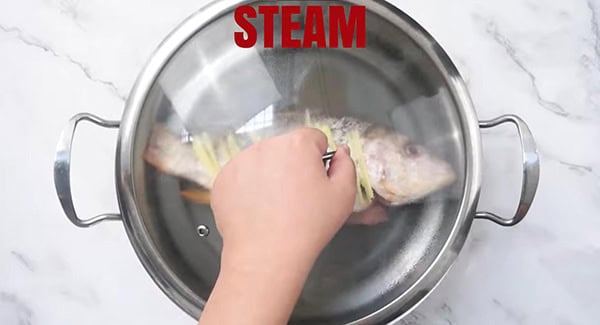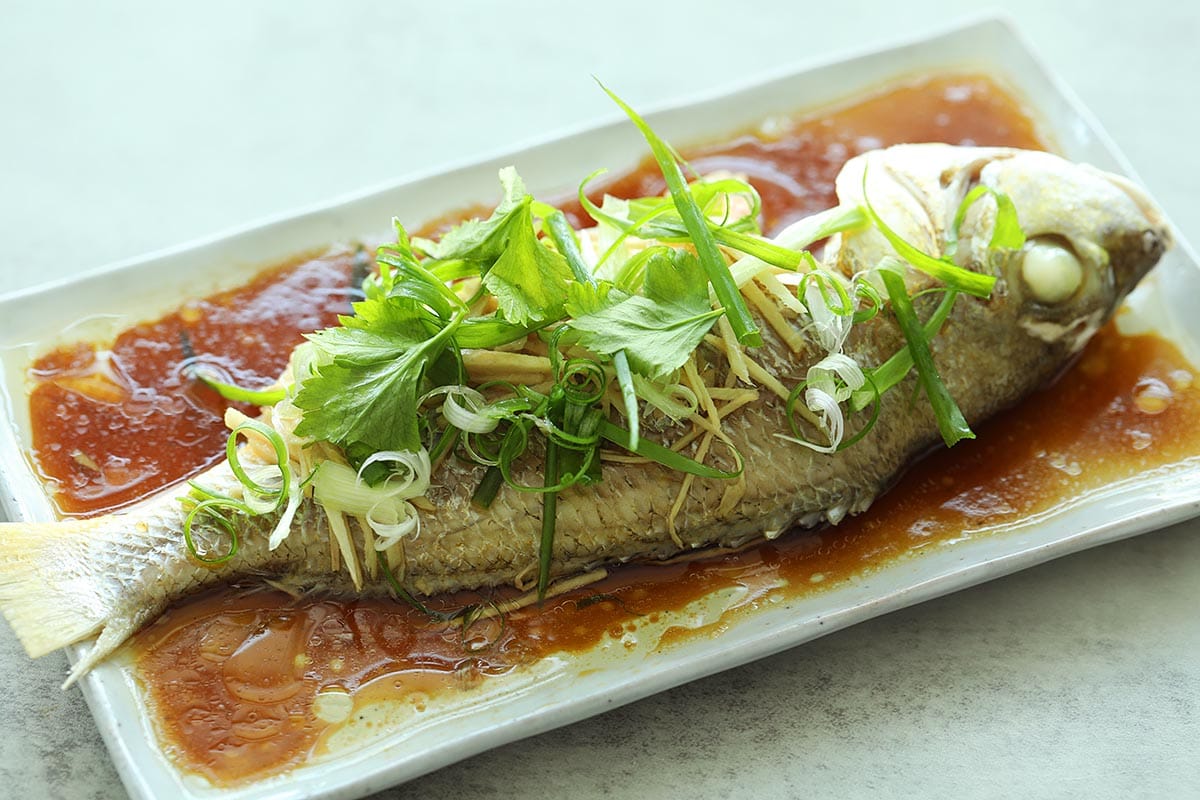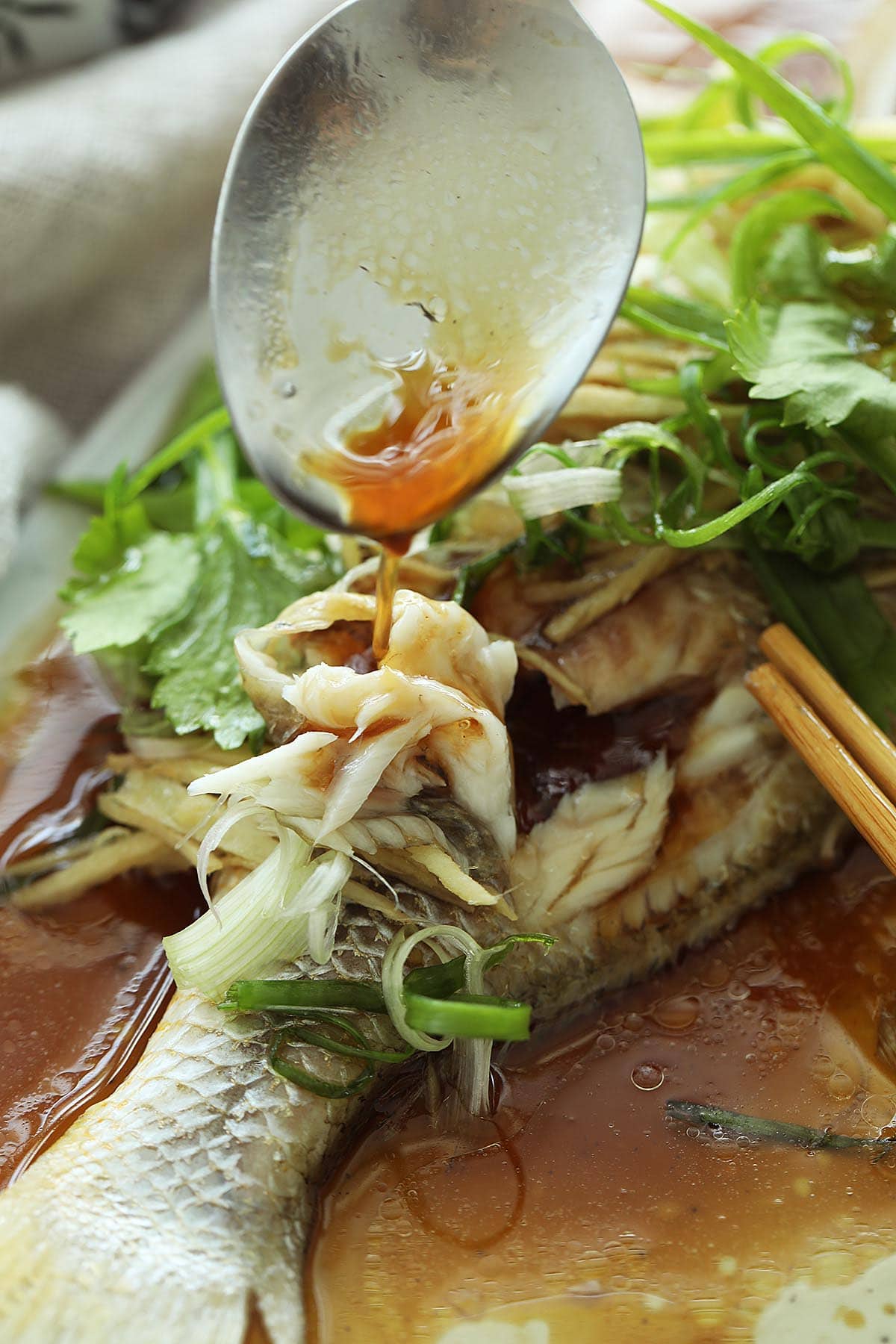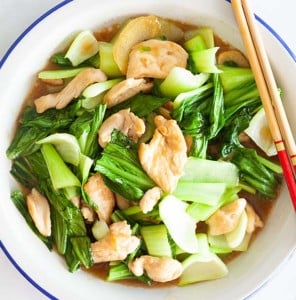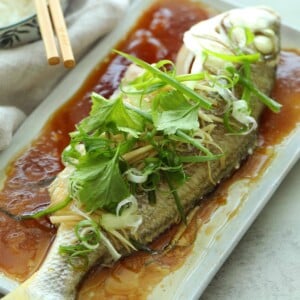Published Jun 03, 2024 Updated Nov 03, 2024 I must confess my bias: I firmly believe that fish is at its best when steamed. It’s a matter of personal preference; I just love the tender, silky, and delicately flaky texture of perfectly steamed fish. Certain kinds of fish, such as the highly prized “Soon Hock” or Marble Goby fish, a freshwater favorite in Malaysia, are known for their exceptional steamed texture. Additionally, mild-flavored fish like snapper (both red and white), sea bass, and rock cod are top choices for this recipe. Regardless of the fish variety, the true highlight of the fish lies in its two pieces of fish cheek. The slightly chewy texture of these cheeks is simply divine and absolutely delightful. As simple as it might seem, making a perfect Cantonese style steamed fish takes a lot of techniques and skills. I am very fortunate to have learned the secret recipe and tricks from a Cantonese chef that would turn your plain steamed fish to Chinese-restaurant worthy. Below, you’ll find my steamed fish recipe, an authentic and unbeatable rendition that you won’t find anywhere else online! If you’re a fan of homemade Chinese cuisine, don’t miss out on exploring my collection of Chinese recipes! Secondly, it signifies family togetherness and communal dining, as it’s often shared at the table. Overall, whole steamed fish embodies cultural values, auspicious symbolism, and a love for food and family in Chinese culture.
Fish – I used white snapper for this recipe. You may opt for red snapper, striped bass, sea bass, tilapia, or marble goby. If you cannot find fresh or live whole fish at your supermarket, you may use fish fillets. Ginger – If fresh young ginger is available in your market, get it instead of regular or old ginger. Young ginger has the best texture for this recipe. Shaoxing wine – Shaoxing wine imparts a subtle fragrance to the fish, masking and reducing any potential fishy smell. Scallion – Thinly sliced green onion threads curl up when soaked in cold ice water, making the presentation a lot more beautiful. Plus, it complements the ginger and cilantro to complete the dish. Cilantro – Get Chinese cilantro (the variety with thicker stems and bigger leaves) if it’s available in your market. If not, regular cilantro or coriander works equally well.
Steamed Fish Soy Sauce
My secret steamed fish soy sauce is made of six (6) ingredients:
Soy sauce – Use a good brand of soy sauce that isn’t overly salty or sweet. I recommend Lee Kum Kee brand soy sauce for its consistency. Rock sugar – This is the secret ingredient used by Chinese and Cantonese chefs. Rock sugar imparts a deeper sweetness to the sauce. You may substitute with regular white sugar. Shaoxing wine Sesame oil – A tiny amount perks up the soy sauce mixture with intense aroma and fragrance. Ground white pepper – Gives a mild peppery kick to the sauce, balancing out the saltiness of the soy sauce and the sweetness of the sugar. Water – Used to dilute the sauce.
See the recipe card for full information on ingredients.
Teowchew steamed fish: A renowned dish from the Teochew (Chaozhou) region, this recipe features whole fish steamed with salted vegetables, tofu cubes, scallions, tomatoes, and pickled plums. The result is a tantalizing dish bursting with robust, tangy, and savory flavors. Thai Steamed Fish: This vibrant recipe is packed with the zesty and tangy flavors of lime juice and spicy Thai chilies, creating a refreshing and aromatic dish that highlights the fish’s natural sweetness. Steamed Fish with Fermented Black Beans: Using douchi or salted soybeans, this variation adds a pungent and savory note to the dish. The black beans are mashed and used as a seasoning and topping for whole fish or fish fillets, imparting bold and complex flavors. Hunan Steamed Fish: Known for its fiery heat, this dish features “duo jiao” (剁椒), or pickled red chilies, combined with fermented black beans. The result is a lipsmackingly good dish with briny, spicy, and intensely flavorful chilies, perfect for those who love a kick of heat.
Steamer: You can use a tiered metal steamer, bamboo steamer, an electric steamer, built-in steam oven, or a traditional Chinese wok with lid, propped up with a bowl or a pair of chopsticks. Regardless of the utensil used, it must be big and wide enough to fit in a whole fish. Plate lifter: Also known as a dish lifter or plate gripper, this is a very useful kitchen tool designed to safely and securely lift hot plates, bowls, or dishes from a steamer. Heatproof plate: This is optional if you have a plate lifter. Otherwise, a heatproof plate will make transferring easier.
Pro Tips For Restaurant-style Chinese Steamed Fish
Fresh fish, preferably alive and swimming in a tank. Steam for 8-10 minutes, adjusting to 8 minutes for a smaller fish or 10 minutes for a larger one. Trust your judgment and remember to set your kitchen timer. After steaming, discard the fishy and cloudy fish water seeping out during the steaming process. Contrary to common belief, it doesn’t enhance the flavors of a steamed fish dish. If anything, it may impart a bitter and fishy taste if the fish was not properly cleaned. Rock sugar is the secret behind the exceptional flavor of the soy sauce mixture. Ever wondered why it’s so delicious you can eat plain steamed rice with it? Now you know.
I hope you enjoy this post as much as I do. If you try my recipe, please leave a comment and consider giving it a 5-star rating. For more easy and delicious recipes, explore my Recipe Index, and stay updated by subscribing to my newsletter and following me on Facebook, Pinterest, and Instagram for new updates.

